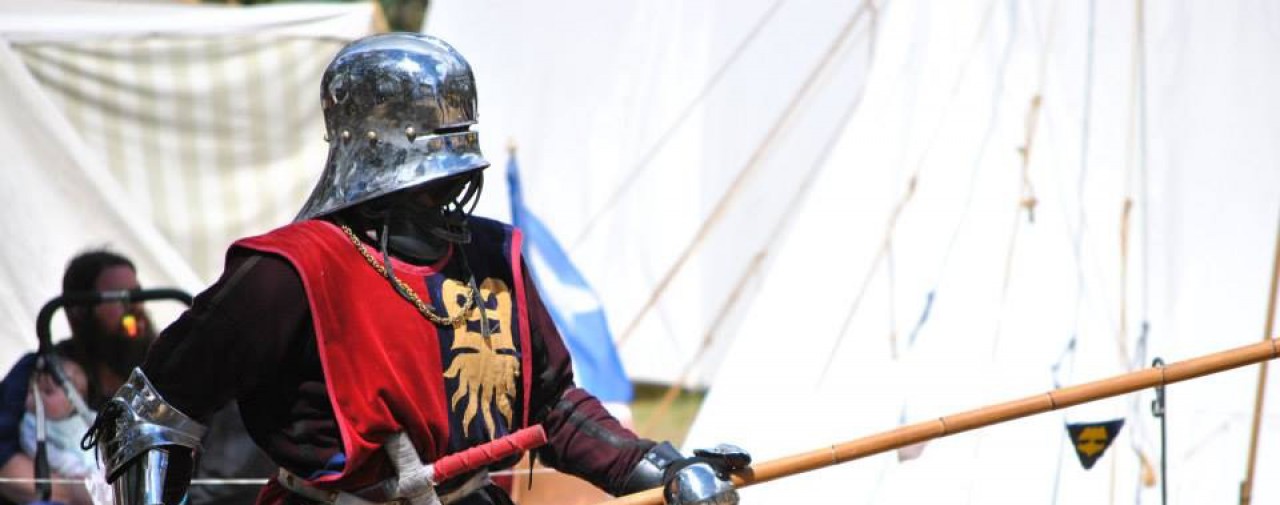Many of you would be aware of my slight obsession with always striking with the edge of your sword. I even did a short clip on this a while back which caused a little bit of discussion in other forums.
There has been a trend in many SCA groups to simply ignore or to be unaware of the need to treat our tournament sticks as though they were a weapon with an edge.
Indeed there are some combatants were this ignorance forms a part of their technique (or lack thereof).
I have even read some members of the Chivalry claim that striking with edge and in the plane of the blade is not necessary.
The rules here are clear, to quote-
6.4 Effects of Blows
1. Blows must be delivered with effective technique for the particular type of weapon used, and must strike properly oriented and with sufficient force, to be considered an effective, or good, blow.
Lets think for a moment what “must strike properly oriented” means, simply that you must strike in the plane of the blade. It does not mean that you have to strike on the taped edge.
Pretend for a moment that you are holding a real bladed sword. Perform your cut as you would with a rattan weapon. Are you striking with the edge? Did you cut come in along that same line? It is this last bit that is critical, not only for delivering a cut with good power but also for making the weapon work in the manner it has been designed to do.
Let us look at an example of this, difficult as it is to talk about this without pictures. Someone attacks with a wrap to the back of their opponent’s helm. The sword comes high dropping almost vertically down hitting the back of the helm directly on the strip of tape marking the swords edge. This cut would be considered flat as the arc of the cut was at right angles to the plane of the blade. For this cut to be legal the sword would need to come in horizontally or for the sword to strike on a very different part of the stick.
Such flat/with tape cuts happen a lot on the fast wraps many combatant use. Indeed I am absolutely guilty of doing this until (to my shame) I saw video of me taking someone’s leg with just such an illegal cut.
Another common place was combatants throw a flat cut is in attacks to the offside. As they try to reach around the defence the sword will strike with the flat of the blade. Just like the wraps, some of these strikes come in at an angle that would never work with a real weapon.
Remember that it is the way the sword moves to the target that is the best determinate of it a cut was properly oriented, not the tape making the edge.
It is true that by ignoring the rule some folk are able to make hits that would have been impossible or slower if they had made a correct cut. To be blunt these people are scoring victories that they have in no way earned. At best they are either poorly trained or ignorant of the rules by which we play. At worst they are simply cheating. There is no honour to be gained by false victories.
How do we ensure that we always cut properly? I think we need to do several things. Having a proper grip on your sword is a good start. Do some pell work with a real sword is an excellent thing to do. Making sure you are delivering your cuts properly is also a fundamental part of this. Retape your sword and see if there are any marks on the flat of the blade. Use this to correct your technique. Most importantly, be honest with yourself. Are you really using your weapon as it is intended or are you cheating yourself as much as anyone else?
Have the people you train with look out for any errant strikes. If anyone calls a strike flat, refight the bout. Remember, victory must be by skill not by doing things incorrectly.
I will be the first to put up there hand and say that I am not perfect in this matter. I have had to drop a very effective attack because I simply have been unable to perform this cut correctly.
Unfortunately there are some combatants that are unaware of the requirement to strike properly. This is sometimes the fault of their environment. If you are from a group that does not pick up on these bad habits then it is difficult to correct them. Make them aware of what good swordsmanship is gently. In the end it is only yourself that you have control over.
I am sure to annoy some people my comments here. That is probably partly my intention. While we all sometimes make mistakes, I have witnessed many examples of combatants who are simply ignoring the rules and this is cheating.
In the end we all must be honest with ourselves and what we do. In some way this is a true lesson of swordsmanship.
